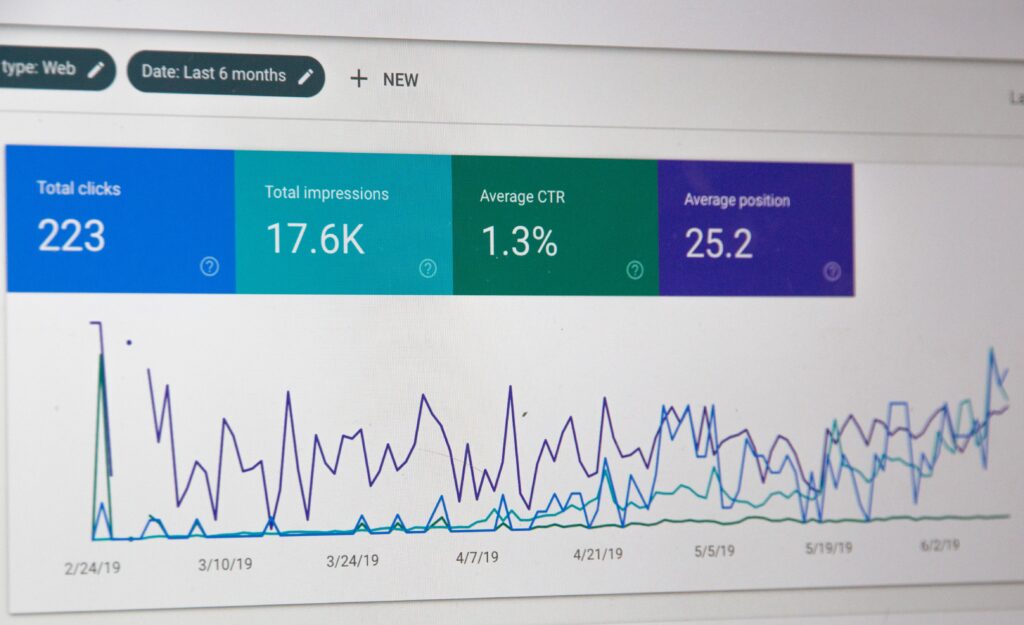Everyone needs shortcuts. But not the type that compromises quality. Instead, you need the type that helps you deliver better results at a lower cost.

And, of course, that’s what account-based marketing does. Seventy-five percent of marketers use account-based marketing (up from just 38% in 2020). And the potential impacts of using ABM are significant. Eighty-five percent of those surveyed said that ABM outperforms their other marketing investments and contributes, on average, 74% of a company’s total revenue. Not bad, right?
But part of achieving that success involves using the right KPIs, because doing so helps find the “levers” you can pull to create greater impact. That’s why we’ve created a cheat sheet that outlines the most important ABM KPIs to measure — and to ignore.
Account-Based Marketing KPIs to Measure
ABM KPIs: Email Open and Click-Through Rates
Are you wondering how to measure account-based marketing? A great place to start is with email open and click-through rates. They tell you how much your audience cares about your content. So what are good open rates? On average, an open rate of 17% to 28% is considered good. A decent click-through rate can be anywhere from 1% to 5% based on your industry. But the ultimate source of truth is always your internal data.
For example, maybe an average open rate is 17%, but your internal normal is closer to 30%. So when that rate drops to 20% — technically a “good” rate — you know something is amiss and it’s time to investigate. For example, you might need to change your subject lines, content, and CTAs to better appeal to your audience.
ABM KPIs: Content Engagement
Noise. Your customers get so much noise that it’s difficult to stand out. And the quickest way to figure out if you are the noise or you’re rising above it is content engagement.
Measure engagement on every piece of content that you create, whether it’s by tracking email open rates, email clicks, page views, social media shares, comments, or something else. This will signal which content is useful to your audience and which content to retire. And with this information in hand, you can create more of what’s working, repurpose it, and reformat it.
ABM KPIs: Form Fills
Gathering data is an important part of nurturing and engaging your leads and customers. After all, you can’t personalize your marketing or effectively convince your audience that your solution is the right fit if you lack data. And gathering insights becomes even more critical when you’re dealing with an account, because you need to determine who the best person is to engage at every step of the customer journey.
Tracking your form fills allows you to see if your method of gathering information is working, and adjust your efforts if it isn’t, so you’re collecting the insights you need to do your job.
ABM KPIs: Conversions Throughout the Customer Journey
As you nurture and engage your customer, there should be several CTAs and opportunities for them to convert throughout the customer journey. Make sure that you’re measuring the conversion rate for each CTA to keep better track of where you’re losing customers throughout the sales cycle. This information will help refine the customer journey and improve results.

ABM KPIs: Phone Calls and Demos Scheduled
If you work in marketing or sales, you know that one of the hardest things to do is schedule a meeting with a new lead. And this step is critical because it’s what takes you closer to sealing the deal. Therefore, phone calls and scheduled demos are one of your most critical ABM metrics to track.
ABM KPIs: Deals Closed and New Customer Acquisition
At the end of the day, the goal is to drive sales and acquire new customers, so diligently track these ABM success metrics. This information is important because it allows you to not only evaluate the success of your entire campaign but also compare it with your performance in prior years.
ABM KPIs: Account Health and Customer Retention
You’ve heard it before: acquiring a new customer costs 5x to 7x more than it does to retain one. Plus, existing customers are 50% more likely to try new products and spend 31% more than new customers. As a result, it’s not surprising that B2B marketers are increasingly focused on customer lifetime value.
When considering account-based marketing metrics, keep an eye on customer satisfaction. For example, surveying customers and collecting net promoter scores can help determine customer satisfaction so your team understands how and when to take action. Not only that, but the responses you gather will keep your team members tuned in to what customers want and need, so they can ensure that any future product or service updates match those interests.
Another ABM measurement to consider is the customer retention rate. If you’re struggling to keep customers from year to year, it may be time to reevaluate some of your initiatives and practices to prevent that trend.
Account-Based Marketing KPIs to Ignore
ABM KPIs: Number of Leads
This is not to say that leads are not great. You definitely want more leads from year to year. But if you’re having success generating demand only to have those leads fall off later, something isn’t working. So, instead of measuring leads, consider looking at marketing-qualified leads or those who have gone through a vetting process and achieved a specific score before being handed off to sales.

ABM KPIs: Sales Cycle Length
Although you should be looking for places to shorten the length of your sales cycle, you should also keep in mind that nurturing takes time. Every customer is unique and may have different approval processes they need to go through before signing a contract.
When done right, ABM organically decreases sales cycles, so you can take your focus off this metric and put it on the others.
And remember, account-based marketing measurement is a process. First, you have to know which metrics to track. Then you have to do it consistently and iterate as needed. But the good news is that when improving your ABM campaigns, you don’t have to go it alone. We can help you leverage software to nurture your best opportunities to increase engagement and efficiency and improve ROI. It’s the shortcut you need to make your ABM strategy work harder for you.
